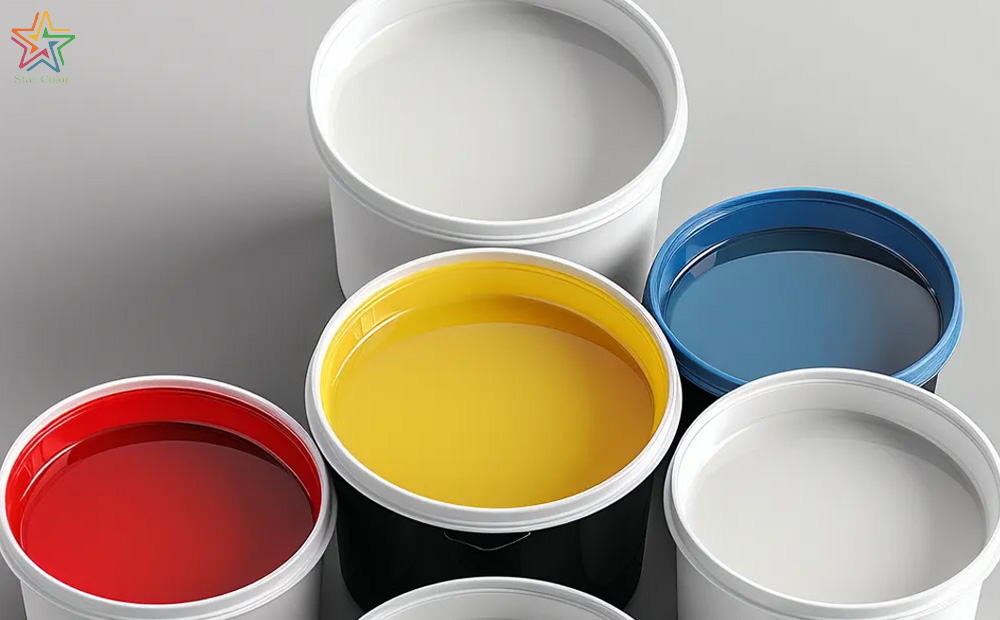 RU
RU
 EN
EN
 CN
CN

Position:HOME > Ink Knowledge > Water-based Ink
Date: Feb 05 2025 From: Star Color Views:
In the packaging and printing industry, BOPP (Biaxially Oriented Polypropylene) film has become a widely used packaging material due to its excellent mechanical properties, transparency, and barrier properties. Water-based inks, with their environmental benefits, are gradually becoming an important choice for printing on BOPP film. However, in actual production, several issues often arise when using water-based inks to print on BOPP film. Let's delve into these issues in detail.
Manifestation of the Problem:
The ink does not adhere firmly to the surface of the BOPP film, leading to easy detachment and ink shedding, especially during subsequent processing or use, such as folding or friction of the film.
Root Cause Analysis:
Characteristics of BOPP Film: BOPP film has a low surface energy and low polarity, resulting in poor affinity with water-based inks. Its molecular structure is tight, hindering ink penetration and adhesion.
Water-based Ink Formulation: Inappropriate selection of resins in water-based inks fails to form effective chemical bonding or physical adsorption with BOPP film; unreasonable use of additives, such as dispersants and leveling agents, may migrate to the ink surface, affecting the adhesion between the ink and the film.
Solutions:
Film Pretreatment: Perform corona treatment or plasma treatment on BOPP film to increase its surface roughness and polarity, thereby enhancing surface energy and improving adhesion with the ink. Corona treatment requires strict control of treatment intensity and duration to avoid degrading film performance due to over-treatment.
Optimize Ink Formulation: Select water-based resins with good compatibility with BOPP film, such as modified acrylic resins containing special functional groups (e.g., hydroxyl, carboxyl groups); reasonably adjust the types and amounts of additives, and add adhesion promoters to enhance the bonding between the ink and the film.
Manifestation of the Problem:
The ink takes a long time to dry after printing, affecting production efficiency, and is prone to issues such as ink smearing and sticking during the drying process.
Root Cause Analysis:
Characteristics of Water-based Ink: Water-based inks use water as a solvent, which has a high latent heat of evaporation. Compared to organic solvents, they dry slower. Moreover, drying speed is significantly affected by environmental temperature and humidity. In high-humidity environments, water evaporation is hindered, significantly extending drying time.
Drying Equipment and Process: Insufficient power of drying equipment, poor hot air circulation, or unreasonable drying temperature settings cannot meet the rapid drying requirements of water-based inks.
Solutions:
Improve Drying Equipment: Use efficient drying equipment, such as increasing the length of the drying oven, raising hot air temperature and velocity, and optimizing the hot air circulation system to ensure the ink is adequately heated, accelerating water evaporation. Additionally, auxiliary drying methods like infrared drying and UV drying can be combined to improve drying efficiency.
Adjust Drying Process: Flexibly adjust drying process parameters based on changes in environmental temperature and humidity. In high-humidity environments, appropriately increase drying temperature and extend drying time; alternatively, adopt staged drying methods, first performing low-temperature pre-drying to initially cure the ink, followed by high-temperature drying for complete curing.
Manifestation of the Problem:
During the printing process, issues such as uneven ink transfer, plate plugging, and pasting occur, affecting print quality and production efficiency.
Root Cause Analysis:
Ink Viscosity: Inappropriate viscosity of water-based inks can lead to difficult ink transfer and easy plate plugging if the viscosity is too high; excessively low viscosity can cause excessive ink flow during printing, resulting in pasting and uneven ink transfer.
Printing Equipment and Process: Insufficient precision of printing equipment, worn-out anilox rolls, uneven scraper pressure, etc., all affect ink transfer and print quality. Additionally, excessively fast or slow printing speeds can also cause printability issues.
Solutions:
Precisely Control Ink Viscosity: Use a viscometer to accurately measure and adjust the viscosity of water-based inks according to printing equipment and process requirements. Regularly monitor ink viscosity during printing and make timely adjustments to ensure stability.
Maintain and Optimize Printing Equipment and Process: Regularly maintain and service printing equipment, replace worn-out anilox rolls and scrapers to ensure equipment precision and performance. Experimentally determine optimal printing process parameters, such as printing speed and scraper pressure, to ensure uniform ink transfer and good print quality.
Water-based ink printing on BOPP film offers environmental advantages but faces various practical challenges. By deeply analyzing the causes of these issues and adopting targeted solutions, we can effectively improve the print quality and production efficiency of water-based inks on BOPP film, promoting the development of eco-friendly printing technologies in the packaging industry.